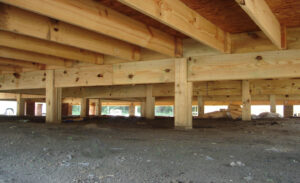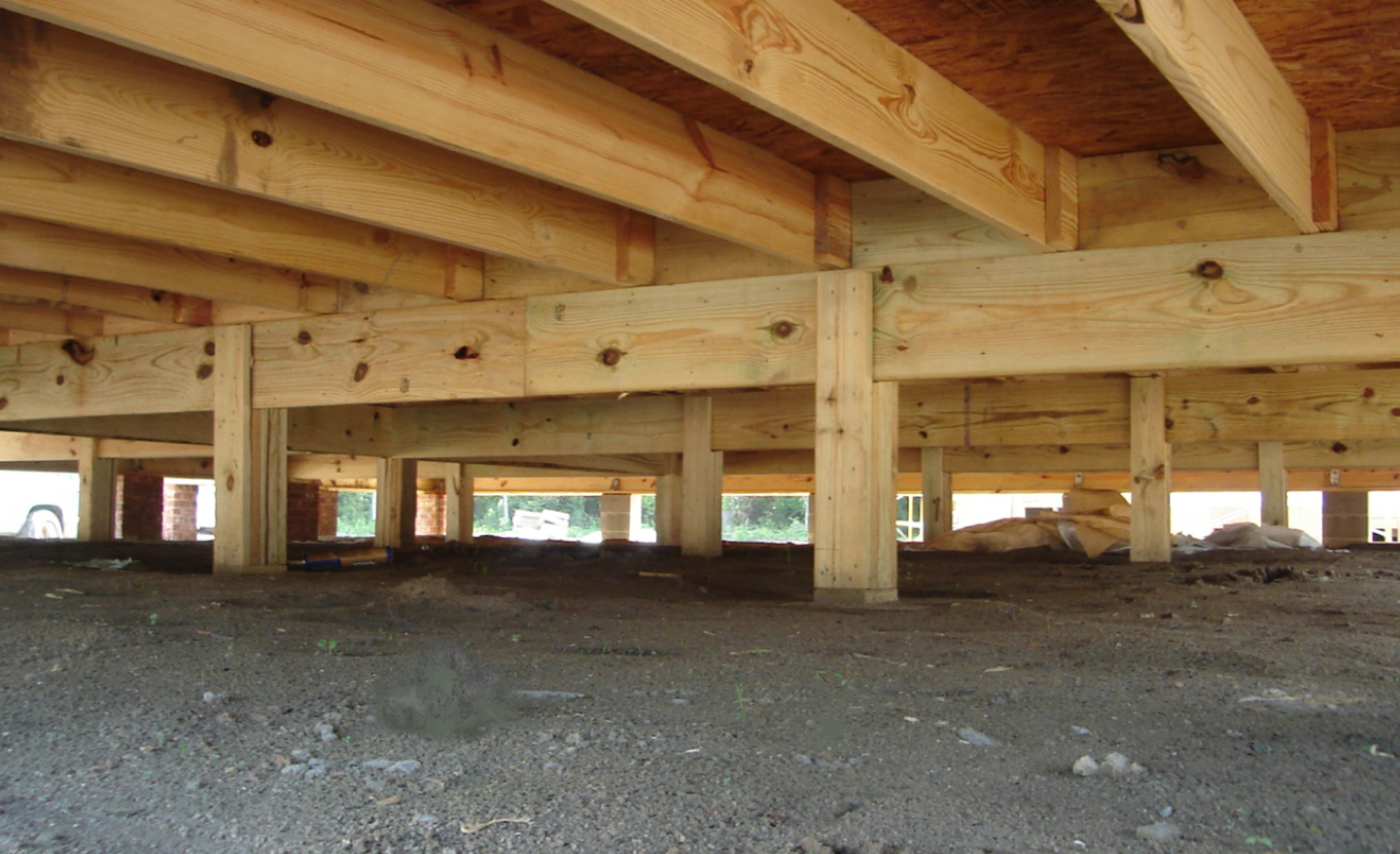
Structural Mechanics of A Pier and Bear Foundation
Pier and beam foundations are commonly found in many buildings across the world. These types of foundations have piers dug a certain depth into the ground and are placed at intervals along the home sitting on top of it. The weight on the building is evenly transferred through beams usually made of wood. The beam’s structure holds the home steady as they are fixed to stable piers from the ground. The space between the piers and under the beams creates an area called a crawl space. This space is used for housing utilities like plumbing and electrical wiring.
Role of Piers and Beams in Weight Distribution
The piers in a home’s foundation hold the load using column arrangement. The beams are then fixed on to the piers and support the structure fixed above it. This design helps distribute the weight across a larger surface area. The piers are strategically spaced apart by an engineer to ensure that the home’s weight is evenly balanced on the foundation. This foundation is often the ideal choice for homes that have soft, expansive, or unstable soils, to reduce the risk of damage to a home’s foundation.
Materials Used in Pier and Beam Foundations
Common Materials
There are a few materials needed to build homes with a pier and beam foundation. The most common materials are wood, concrete, and steel. Once a hole is dug, concrete and rebar are used to provide additional strength to the pier. Wood is then used to construct the beams in spaced out rows in which a base for a home gets created. Wood is flexible and durable and acts as a malleable barrier between the fixed piers. This helps homes flex and move if earthquakes ever happen to occur, causing little to no damage as they are able to ride the movement out.
Best Materials for Piers
Foundation Piers can be made of 3 different materials. Concrete, steel, and wood. Wooden piers are commonly seen on beaches supporting docks and light structures. Concrete is used for residential homes across the states. And finally, steel is used in heavy load applications like building skyscrapers. When it comes to what your home’s foundation should use, concrete is generally the best material due to its durability, cost effectiveness, and resistance to external factors. Wooden piers may often require more maintenance and may not be as durable. Steel could support a home for decades to come, but may not be the best option for piers as its cost of building with the material is significantly higher than concrete.
Advantages of Pier and Beam Foundations
Protection from Water Damage
Pier and Beam foundations biggest advantage over others is their elevation from the ground. This empty space between the wooden beams and the ground help protect the structure from water damage. Especially in areas where flooding from heavy rain is common. The elevated design also improves airflow, drying out any water that could cause wood rot.
Repairs Are Easier
The crawl space from pier and beam foundations give homeowners easy access to the plumbing, electrical wiring, and HVAC systems underneath the home. This makes it cheaper to do repairs or upgrades in the future. Unlike a Slab foundation where you may need to break open concrete slabs to gain access to do home repairs. Home owners also gain the ability to conduct easier foundation inspections with the openness of the space.
Flexibility in Different Soil Types
Pier and beam foundations are sometimes used in areas with unstable soils. Piers are placed deep into the ground. This helps wedge the piers between the ground material that may otherwise shift. This helps with stability in some locations where soil may not be ideal. Piers are also able to be adjusted to help ensure that if any shift occurs could be corrected.
Ideal Conditions for Pier and Beam Foundations
Types of Structures That Benefit from Pier and Beam
Smaller buildings like homes, cabins, and small commercial buildings often benefit from pier and beam foundations because of their ease of repair. Buildings on uneven land or on hills can become stabilized using pier and beam foundations. Additionally, homes in flood-prone areas or regions with significant soil movement benefit from the raised structure that pier and beam foundations provide.
How to Maintain a Pier and Beam Foundation
Regular Inspections
If you want your pier and beam foundation to last, you will need to get inspections done to help prevent any issues. Homeowners should check for signs of settling, such as cracks in the walls or uneven floors, and inspect the crawl space for any visible damage. By catching issues early, this could help costly repairs that can occur if left untreated. When you detect something is out of the ordinary should should reach out to a trained professional to get their opinion on what the next appropriate steps would be. If you have a newer home and notice that your home has settled, this can often be fixed by adjusting the piers or adding new pier supports to help with the load.
Common Repair Techniques
When issues like settling or structural damage occur, several repair techniques can be used to restore the foundation. For settling, contractors often lift the structure and adjust or replace the piers to ensure the foundation is level. Beams that have weakened due to moisture or age can be replaced or reinforced with steel for added strength. If cracks have formed, they may need to be filled or sealed to prevent further damage.
When to Consider Professional Help
While minor issues like small cracks or moisture control can often be handled by homeowners, more significant problems require professional intervention. If the foundation has shifted substantially, or if multiple piers need to be replaced, it’s best to hire a contractor who specializes in pier and beam repair. They will have the expertise and equipment to safely restore the foundation to its proper condition.
Maestro’s Pier and Beam Foundation Repair
Pier and beam foundations offer a reliable, adaptable, and sustainable solution for many homeowners, especially in areas with challenging soil conditions or climates like Fort Worth, and Dallas, Texas. Pier and beam foundation may come with higher initial and maintenance costs. You gain the advantages of elevation, water resistance, and access for repairs.
However, like all foundation types, pier and beam systems require regular maintenance to ensure longevity and prevent issues such as settling or moisture buildup. This is where Maestro’s Foundation Repair can be a vital partner for homeowners. With expertise in pier and beam foundations, Maestro’s Foundation Repair provides comprehensive inspection, repair, and maintenance services that address common issues before they escalate. Book a pier and beam foundation repair here.
